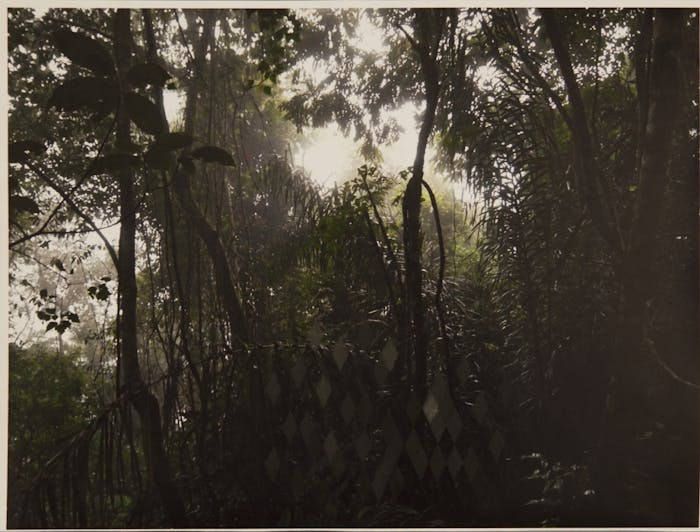As a child you wanted to become a biologist. And that same fascination now inspires your artistic practice. Can you tell something about how that has evolved?
Daniel Steegman Mangrané: “I have always been fascinated by biology and more recently by ecology. Ecology is the branch of biology that studies the total and complete interdependency of all phenomena, be they living forms or otherwise. Ecology is not about sustainable development; it is about coming to understand that we are not above but among the rest of the things that compose the world.”
You combine elements with each other that initially don't seem to have much in common: sleek geometric figures, with the organic forms of nature. This emphasizes the dichotomy between culture and nature, the artificial and the natural. Why do you choose this form to represent that dichotomy?
Steegman Mangrané: “We are used to understanding the world through a system of oppositions like mind and body, subjects and objects, culture and nature … This system is so embedded in our thinking processes, and sustains our understanding of the world to such an extent that we have come to believe those divisions are true.”
“Using simple geometric forms working in an organic way or revealing the stark geometries of nature is a way to show how all those divisions are just artificial constructs, simplistic ways of understanding the world that we should rid ourselves of as soon as possible.”
Your bio on the Mendes Woods website mentions your ‘subtle yet crude experiments that question the relationship between language and the world’. How should that be understood?
Steegman Mangrané: “It refers to the simple, direct way I make my works. I believe that the pieces should be worked just to the point where their idea becomes clear – anything else is overworking. And the idea is how we represent the world to ourselves and where we place ourselves in it. The dichotomies I mentioned are extremely hierarchical: our western traditions places mind above body, culture above nature, subjects above objects, human above the non-human, and I don’t think things are like that … I don’t believe we are above our environment. We are in it, we are part of it, and it is part of us. There’s no clear division.”
At Art Brussels you present an immersive installation with a metal curtain – why choose such a not-so-natural element?
Steegman Mangrané: “The curtain literally entangles the body of the visitors while isolating them and creating a space of reflection and engagement. The rainforest has for a long time been a source of fascination, study and inspiration for my work. In the small space enclosed by the curtain I wish to share some of this fascination and entangle the viewer in the densities of the jungle.”
Can you tell something about the photographs you will be showing?
Steegman Mangrané: “I will be presenting some ‘Invisible Structures’, photos of the rainforest over which I paint some delicate geometric structures, exactly in the hues of their backgrounds – they appear and disappear as your eye skims the surface of the image or as you move in front of the work.”
“There will also be some leaves with golden geometric drawings and one or two split branches. The leaves are from species that are important for the Indians for different reasons: there are plants that are important for subsistence, such as the Bread-fruit trees or the Mandioca root. There are also poisonous plants that can be used for hunting or for medicinal treatments as the Gravatá. You even have plants that are related to specific legends or histories as the Pé de Boi, or others that have a ritualistic use as the red Urucum seeds. The economic, medical, poetic or religious sides of life blend together through the golden drawings made on the leaves – gold also being a material related to the occidental projections about the rainforest.”
“In a broader sense, all the works combined in the presentation continue the investigation into geometry and materiality that fascinates me. In this case I am creating a mixture of opposite materials in terms of status, whilst questioning topological ideas of surface, form, objecthood and drawing.”
What is your feeling about art fairs like Art Brussels?
Steegman Mangrané: “I think that art fairs will need to evolve, or they will collapse. They should think about how to do a better job building stronger professional ties and to think less about immediate sales. There’s a very specific kind of artwork that is successful in fairs, but most of the practices – the most interesting ones – suffer a lot … Fairs are an important source of revenue for some galleries but many – if not most – struggle to cover the costs … There are too many fairs and they are distracting the gallerists from their daily work in their galleries and with their artists … It’s a very complex question that seems to be in a deadlock, but I know many people are seriously thinking about finding a way out.”
